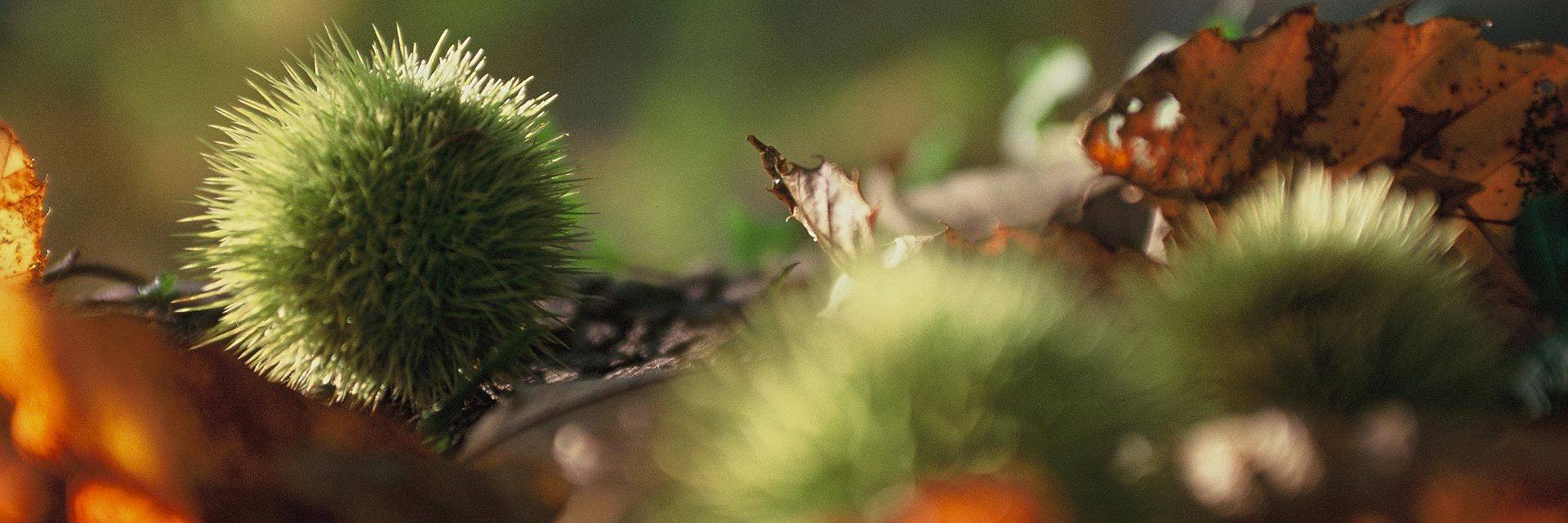If you ask this simple question to a chestnut grower, they will give an ambiguous response, since each chestnut grower produces both ‘chatâigne’ and ‘marron’ chestnuts in different proportions and sizes, depending on the variety. If we ask a confectioner or scientist, the nut called a ‘chatâigne’ is split into segments, i.e. a piece of skin that divides the nut, but the ‘marron’ is not split, and remains whole when opened.
The chestnut grower produces ‘chatâignes’ if the proportion of split fruits is largely than 12% and ‘marrons’ if it is less.
In our department the ‘marrouge’ (Var ‘marron’), a typical local variety, is unusual in producing small ‘marrons’ and large ‘chatâignes’.
View all produce and producers






